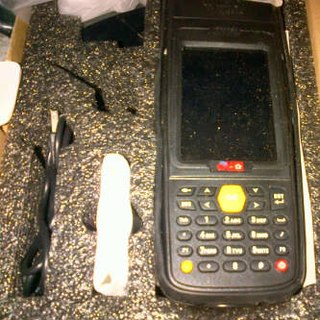Top Qs
Timeline
Chat
Perspective
INEC card reader
Portable electronic voting device used in Nigeria From Wikipedia, the free encyclopedia
Remove ads
The INEC card reader is a portable electronic voting authentication device configured to read only the Permanent Voter Cards (PVCs) issued by the Independent National Electoral Commission (INEC) in Nigeria.[1] The card reader was designed for the accreditation process (authentication of eligible voters before voting).[2] The machine was configured to read only the PVCs of a particular polling unit and can only work on election day.[3]

Remove ads
Operation
The device uses a cryptographic technology with an ultra-low power consumption and processing frequency of 1.2 GHz and uses Android 4.0.0[4]
It is positioned by its operators (usually trained INEC officials) to read the embedded chip on the Personal Voter Card (PVC).[clarification needed] This card is placed into the device, which then displays the voter's details. The voter places their thumb on the device, and their identity is confirmed through Fingerprint authentication.[5] It usually takes about 10 to 20 seconds to validate a voter.[6]
On completion of accreditation process, a "Close V" key is used to complete the accreditation process and the total number of voters accredited can be previewed using a "Query" key. Afterwards, the result may be forwarded to INEC using the "Communication" key.[7]
The card reader was first used for Nigeria's presidential election held on March 28, 2015.[8][9]
Remove ads
References
Wikiwand - on
Seamless Wikipedia browsing. On steroids.
Remove ads
